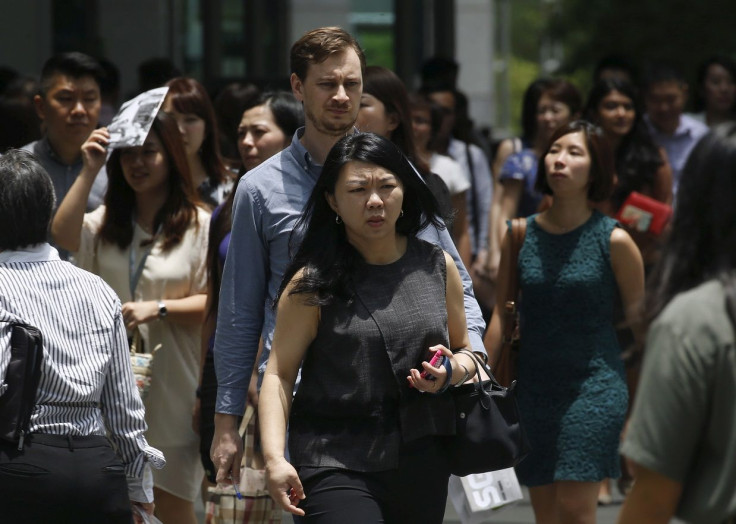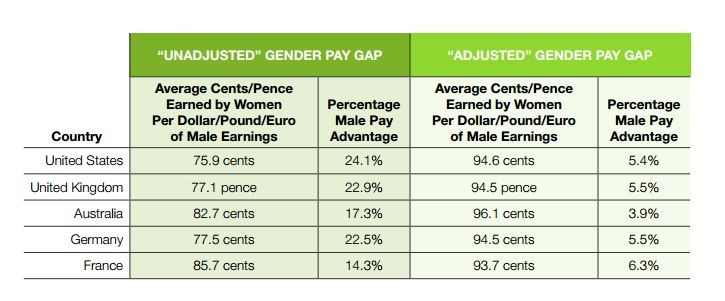Gender pay gap is real: Study shows differences between men and women’s salaries in Australia, UK, US, France and Germany

A new, detailed research has revealed that gender pay gap is real. Glassdoor Economic Research has confirmed there is a significant gender pay gap between men and women in Australia, as well as in the US, UK, Germany and France.
The report, titled “Demystifying the Gender Pay Gap,” consists of both the “unadjusted” and “adjusted” pay gaps in each of the country. Hundreds of thousands of employees revealed their salaries anonymously to online recruitment marketplace Glassdoor for the data. The study includes detailed statistical controls for specific job titles and company names, which allowed Glassdoor to determine both the unadjusted and adjusted pay gaps.
Its conclusion in every mentioned country was unanimous: gender pay gap exists. The survey considered more than 534,000 salary reports were shared by online employees. Unadjusted pay gap means there were no statistical controls for differences between workers or jobs used, while adjusted pay gap took in consideration set of controls, such as age, education, years of experience of the workers, and industry, firm size and other company-specific controls or job title-specific controls.
The study determined that the single biggest cause of the gender pay gap is occupation. The industry sorting of men and women into jobs that pay differently throughout the economy plays a big factor. For example, US Census figures show that women only make up 26 percent of highly paid chief executives, but they make up 71 percent of low-paid cashiers. Past studies suggest that this disparity could be due to social pressures diverting the genders into different career tracks and other gender norms.

Among the five countries, the United States draws the biggest unadjusted gender pay gap at 24.1 percent. The United Kingdom’s unadjusted gender pay gap is at 22.9 percent, with Germany following close at 22.5 percent. Australia has 17.3 percent unadjusted gender pay gap, and France has 14.3 percent.
The adjusted figures have shrunk though still present. France, in this case, has the highest percentage gap at 6.3 percent. The UK and Germany both have adjusted gender pay gap of 5.5 percent, while the US has 5.4 percent. Australia has an adjusted gender pay gap of 3.9 percent.

For Australia, the study found slightly smaller gender pay gap than 17.9 percent, which was what the Australian Workplace Gender Equality Agency estimated in 2015. A sample of 4,044 Glassdoor salaries from 2006 through 2015 were reported by employees for the study.
The average base pay was $99,930 per annum for men and $84,218 for women, which amount to a gender pay gap of $15,722 or roughly 15.7 percent. This amounts to women earning about 84 cents for every dollar men earned on average.
The unadjusted base pay gap for Australian workers is 17.3 percent, the adjusted figures somewhat dipped once controls were added. Of the 17.3 percent, 10.6 percent (or 61 percent of the total gap) is explained by differences in worker characteristics. The remaining 6.7 percent (or 39 percent of the total gap), however, is unexplained.

“The gender pay gap is real, and Glassdoor’s comprehensive study helps us better understand just how significant this gap is across multiple countries,” Dr Andrew Chamberlain, chief economist at Glassdoor, said. “While our report reveals a significant gender pay gap, it’s important to understand there are multiple ways to analyse this gap. Glassdoor’s unique compensation database allows us to closely examine the factors that help explain some of the documented differences in pay between men and women and shine a bright spotlight on the portion of the wage gap for which there seems to be no explanation.”
Dawn Lyon, vice president of corporate affairs of Glassdoor, offered solutions to help close the gender pay gap, saying, “…we should focus on creating policies and programs that provide women with more access to career development and training, such as pay negotiation skills, to support them throughout their lives in any job or field they choose to enter.”
She continued, “Greater transparency around pay can also help eliminate pay gaps by making it easy to identify disparities and spark conversations with employers to ensure people are paid equally for equal work. Research has shown that companies that embraces salary transparency can also improve employee satisfaction in the long run, which boosts productivity.”





















